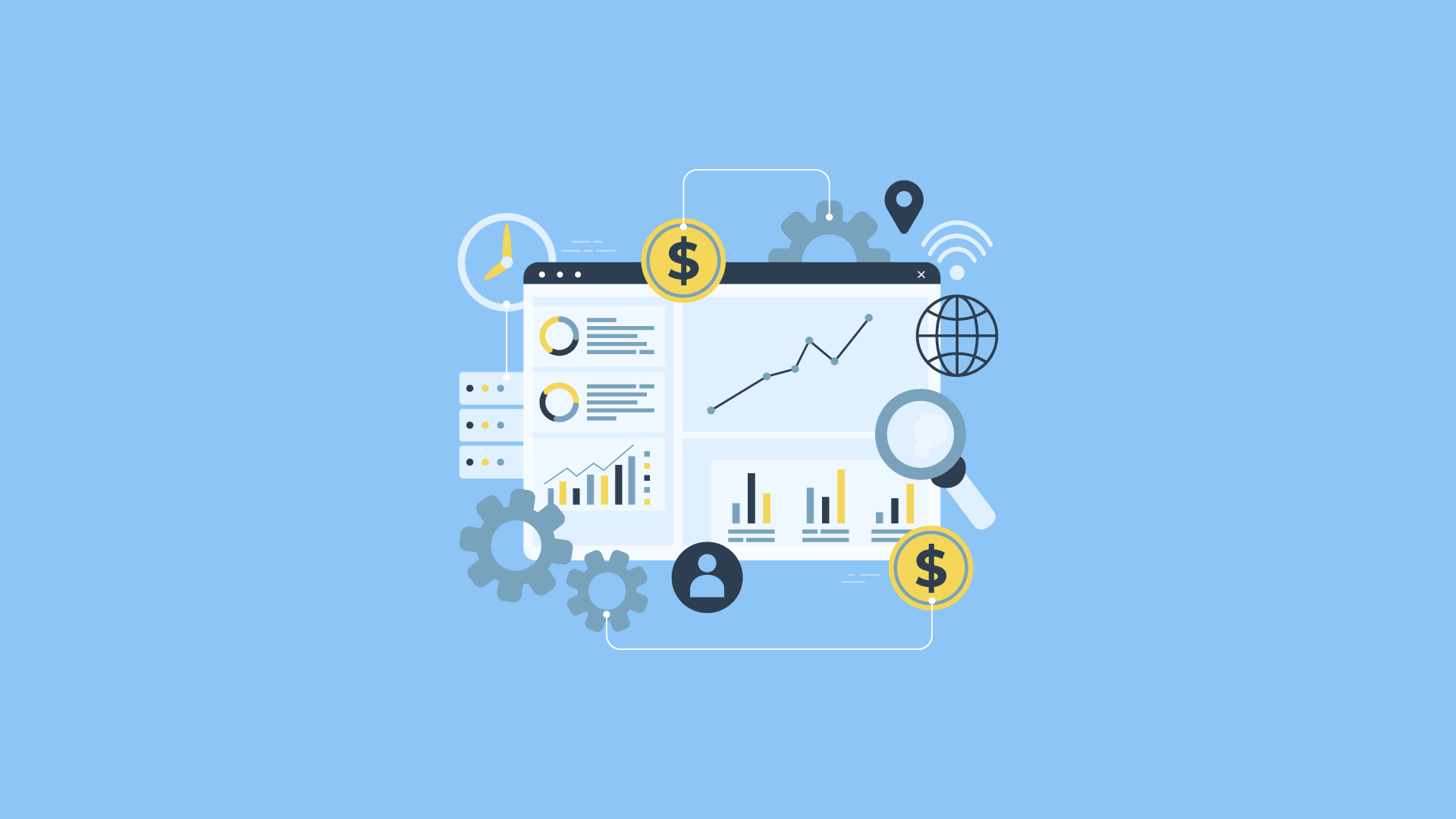Sales enablement refers to the processes involved in helping salespeople sell
Are you aware of the statistics behind Sales Enablement? Why is learning them important for your team and company?
Selling to buyers has changed over time. The way companies sell today differs from how they sold five years ago. As a result, selling strategies, buyer personas, channels, and other elements of sales enablement have also evolved.
Sales enablement statistics provide organizations with valuable insights into their sales processes, which they can then leverage to improve those processes. In this article, we'll examine some key metrics related to sales enablement.
|
Sales Enablement |
Sales Enablement Market Statistics
Alignment between sales and marketing teams can improve your company's ability to close deals by 67%.
As a salesperson or marketer, you know how hard it is to close a deal. It takes time, effort, and persistence to get someone to say yes. But if you have a strong relationship with your customers, they are more likely to agree to your terms and conditions.
This means that you can focus less on convincing them to make a decision and more on making sure that they understand why they should choose you.
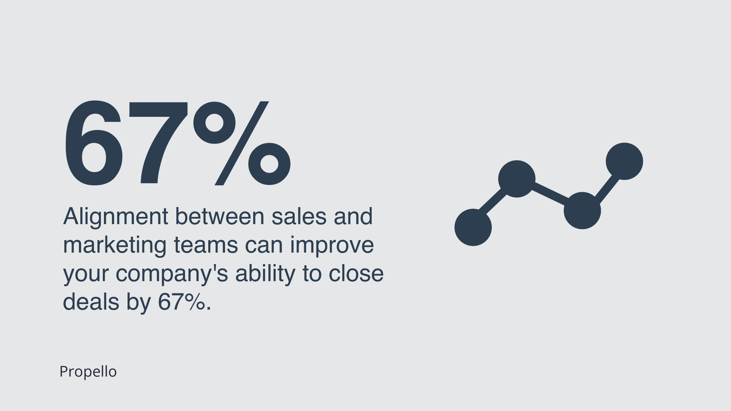
Sales teams who work closely with marketing see 41% greater growth in reaching their quotas.
Marketing and sales are often seen as separate entities, but they're very much intertwined. A well-integrated team can help each other out by sharing information about leads and opportunities, helping one another close deals, and even providing support for one another's activities.
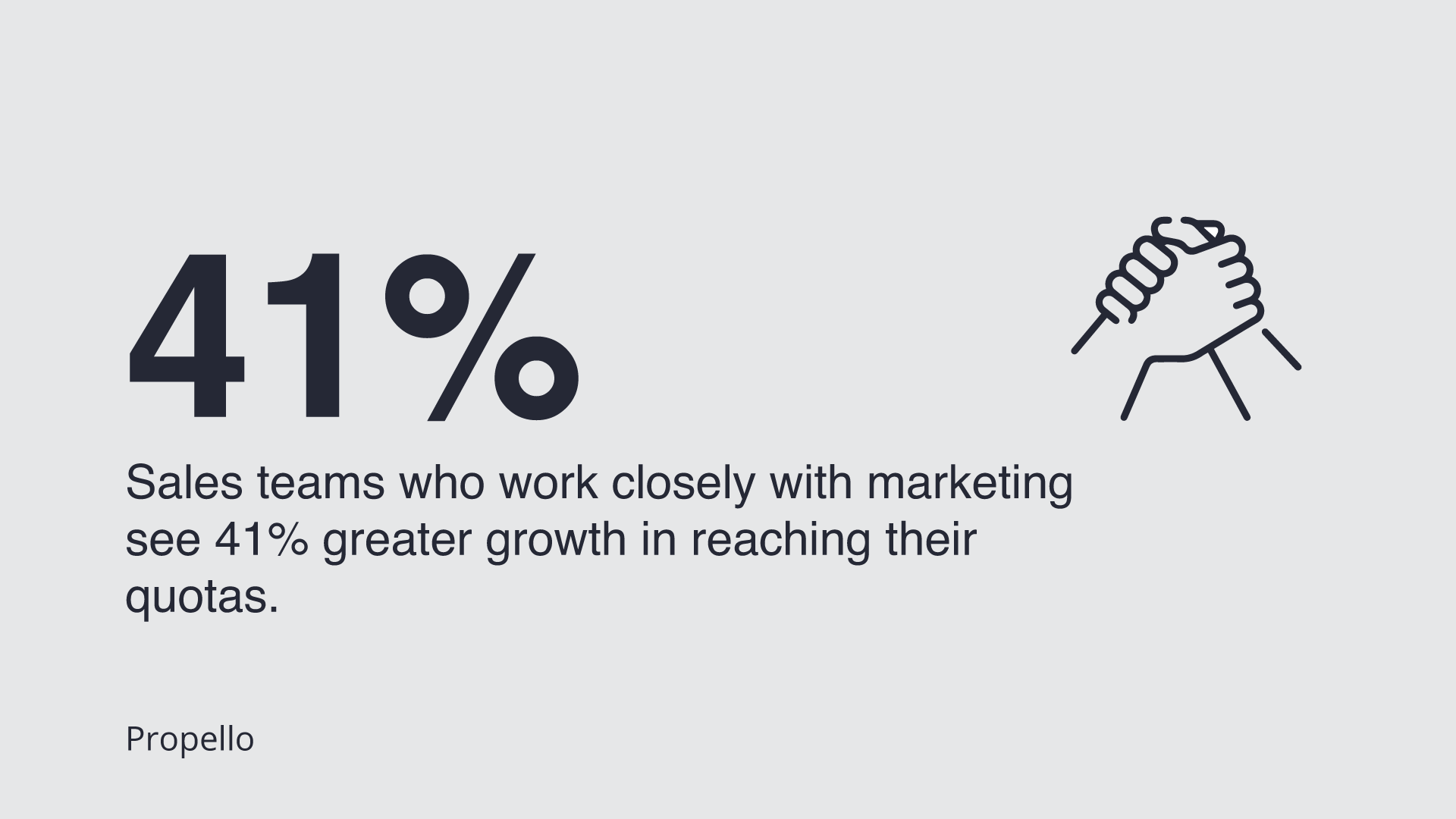
About 28% of media and marketing salespeople don't have easy and immediate access to their own sales collaterals.
A recent study found that only 28% of media and marketing salespeople had easy and direct access to all of their sales collateral. That means that 72% of them are missing out on potential revenue because they can’t easily find or share information about their products with prospects.
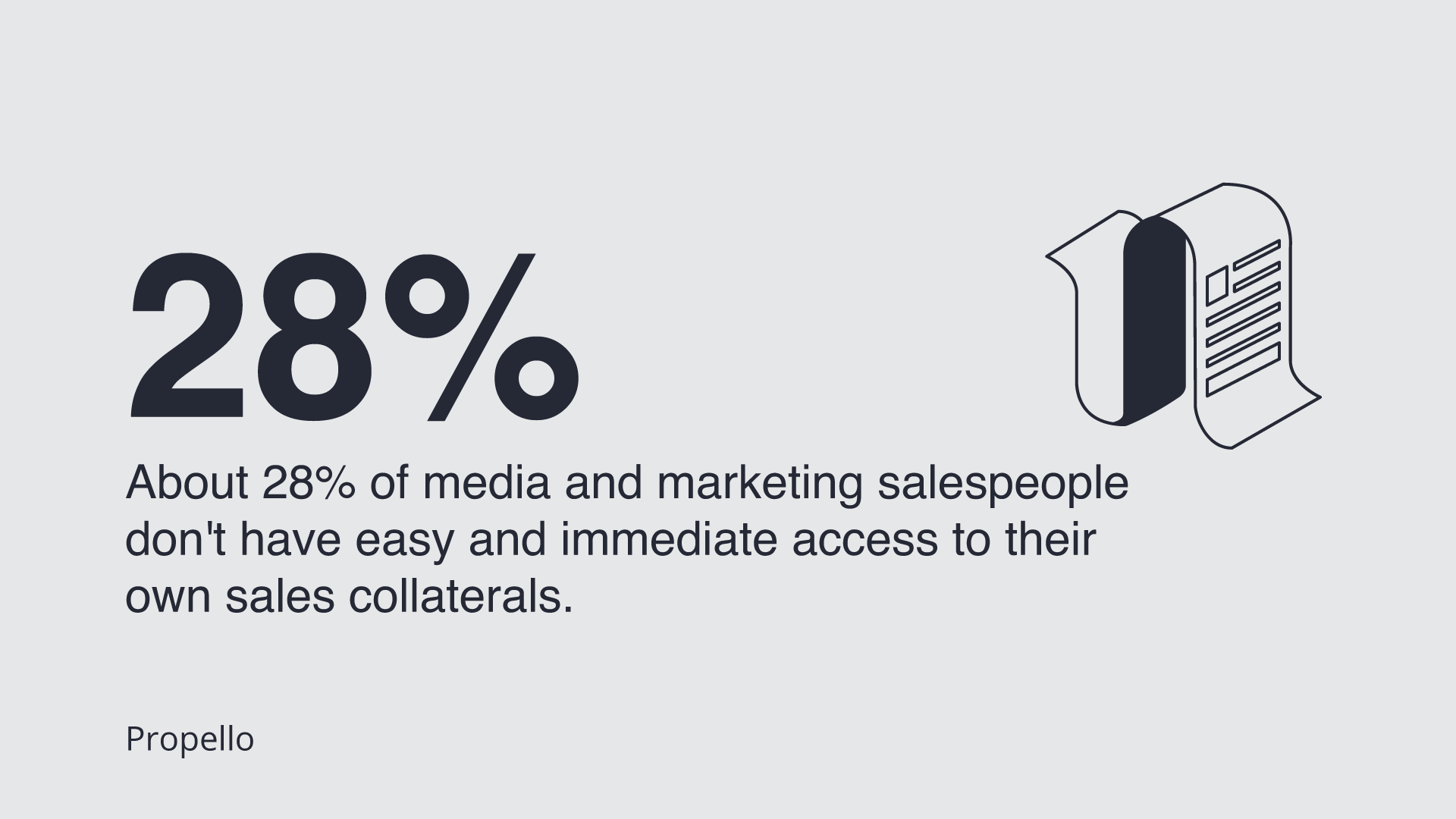
Sales Content and Training Statistics
Content is king. If you want to increase your sales, then you need to create high-quality content for your audience. You can use this content to establish yourself as a thought leader in your industry.
Around 26% of sales reps claim their sales training is ineffective.
Sales reps are often skeptical about whether or not they can learn anything new during their sales training. They may feel like they have already learned everything there is to know about selling, so why should they spend time learning more? But if you want to be successful at sales, you must continue to learn and train your team accordingly.
Only around 35% of sales teams track their content's effectiveness.
Not tracking how well your content converts can be one of your biggest mistakes while running an online business. If you don't know if your content is working or not, then you're missing out on valuable data about where your audience is coming from and what they want.
Around 84% of sales executives said content search and utilization was their top productivity improvement area.
If you want to boost your sales performance, then you need to invest in the right tools and resources. One of the best ways to do this is through content creation and distribution. By creating engaging content, you'll be able to attract more customers and convert them into paying clients.
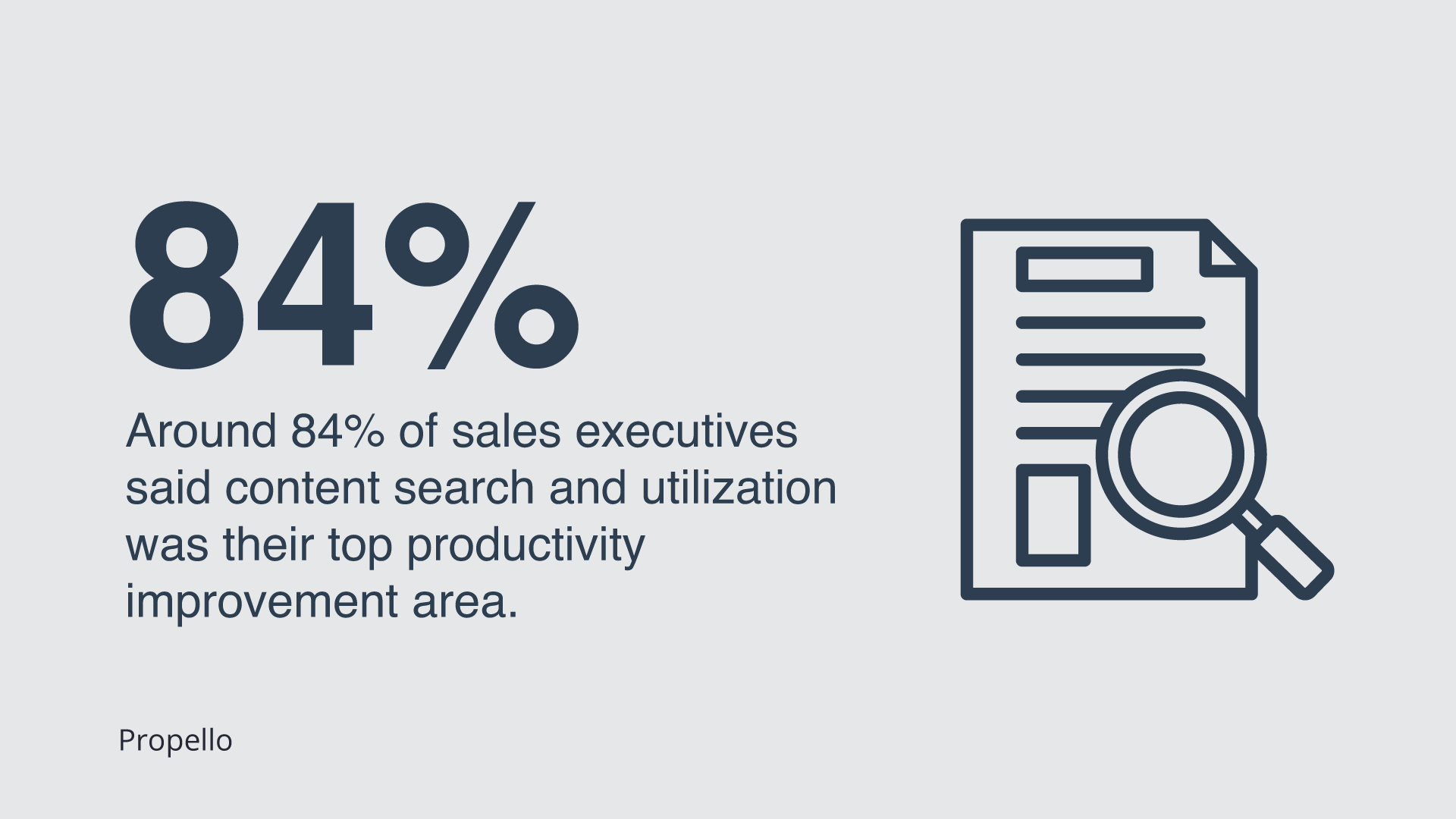
Enterprise organizations lose around $2.3 million each year thanks to opportunity costs of underused or unused marketing content.
That's why companies are looking for tools that can help them manage and optimize their content better. As digital marketers and business owners, it’s also about being proactive with our marketing efforts. We want to measure everything we're doing so we know if it works or not.
How can be sure we're getting the best results from every tool at our disposal? Luckily, various analytics tools out there allow us to track, analyze, and even predict the success of our social media campaigns. I'm going to outline some of these tools here today, but before you get started with one, make sure you understand the types available.
Around 84% of sales training is forgotten in the first 3 months. Effective sales coaching may improve win rates by as much as 29%.
The most effective sales coaches will work closely with their sales team members to ensure that they're always improving. This includes helping them develop new skills, such as using video calls or virtual meetings. It also helps them become more confident when speaking with prospective clients.
As a sales manager, you can help your team grow by providing them with the right tools and resources to succeed. Sales managers who provide their teams with the proper tools and resources tend to see higher levels of engagement among their sales team members.
You can start by making sure that your sales team has access to the right technology. For example, if you're managing a B2B company, then you might consider investing in Hubspot CRM software. These programs can help you organize all of your leads and prospects, allowing you to create personalized follow-up messages based on their needs.
You can also use email automation tools to send emails to your contacts. This allows you to stay organized and focused throughout the day. You can also set up automated drip campaigns to keep your contacts engaged with your brand.
If your sales representatives feel they aren't learning or growing in your company, you could lose up to 60% of your whole team within 4 years.
It's important to remember that salespeople don't just learn from books and courses. They also learn from other people. If your sales team feels like they're stuck in a rut, then it's time to look outside of your organization for fresh ideas.
For example, you could use data, align your sales and marketing teams, or find an external consultant to help you solve problems. The key is to make sure that you're constantly trying to innovate and adapt to changing market conditions.
Sales Rep Productivity Statistics
To ensure your company is healthy, keep the productivity of your employees high. Metrics in employee performance can tell you if your team is hitting its goals and helping them grow. Employee engagement helps you know which employees need support and which ones are doing their job well.
At around 45% new salespeople ramping up to full productivity is the most commonly cited sales enablement productivity goal.
To achieve this, you'll want to focus on two things: hiring the right people and giving them the right training. Hiring the right people means finding candidates who have the right skill sets, experience, and personality traits. Training the right people means ensuring that they receive the right education, mentoring, and development opportunities.
When you hire the right people, you'll be able to give them the best possible training.
When you train the right people, you can increase their confidence and improve their ability to close deals. Research shows that salespeople who received training
Around 58% of pipelines stall because there aren't enough opportunities for them to add value.
The more opportunities your sales reps have, the better chance they have at closing deals. To get these opportunities, you'll need to build relationships with customers and partners. By creating strong partnerships, you can offer your clients multiple options and gain insight into what they need.
This will allow you to develop a sales enablement strategy that works for both parties. It will also help you identify potential issues before they become major roadblocks.
You can use sales enablement to create a culture where everyone is encouraged to share knowledge and collaborate. This will help you attract top talent and retain current employees.
By building stronger relationships, you can also reduce the amount of time it takes to close deals. When you do so, you'll be able to save money and resources.
This will allow you to spend less time chasing down leads and more time focusing on developing long-term relationships.
As a result, you'll be able to generate more revenue and profit.
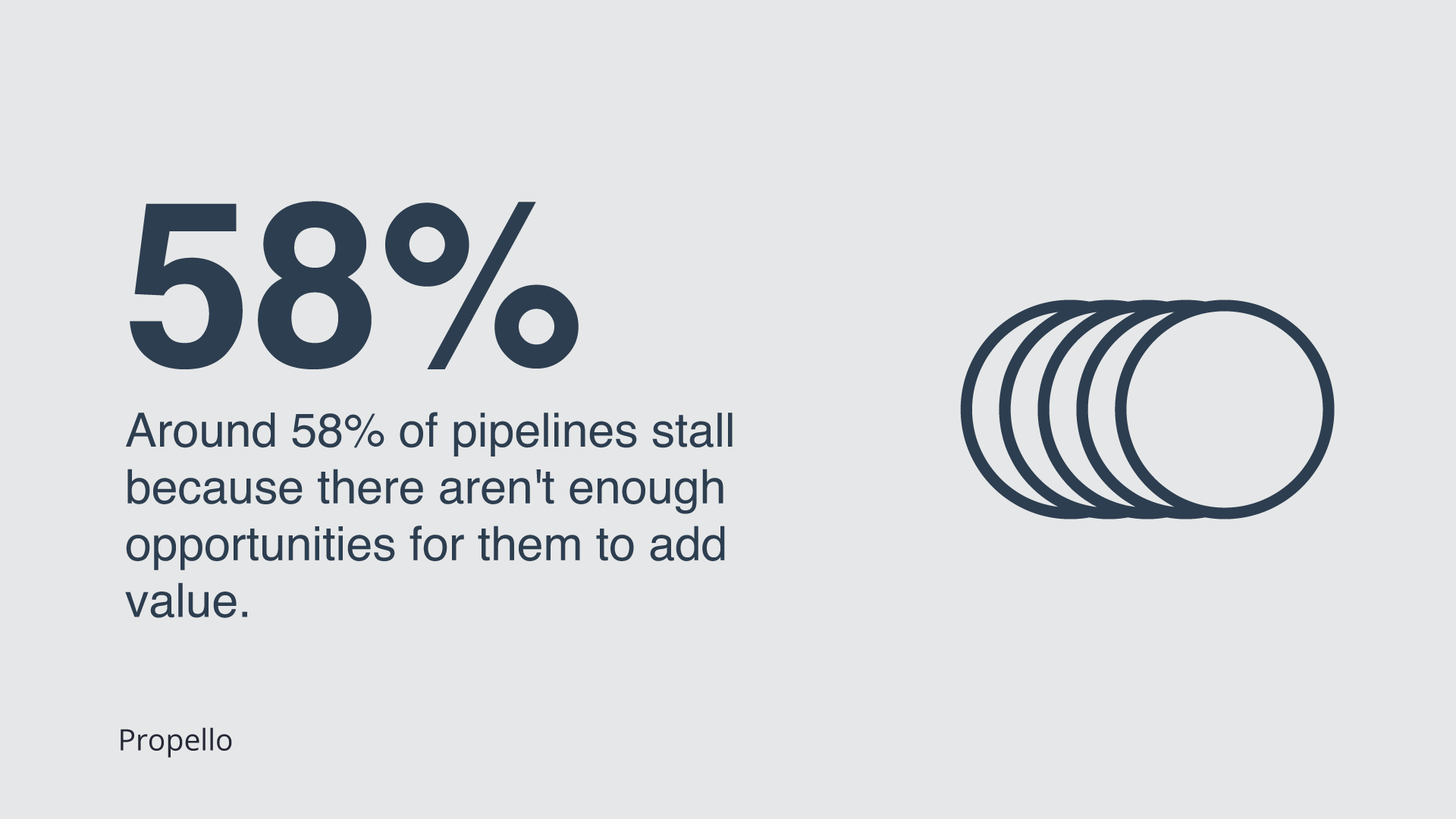
Around 55% of C-suite executives claim that sales enablement solutions are the top technology investment required to boost sales productivity.
If you want to succeed as a business owner, you'll need to invest in technology. Sales enablement tools can help you manage all aspects of your business from one place. They can also help you automate processes and streamline workflows.
These tools can also help you track progress and measure results. If you don't have the right systems in place, you won't be able to effectively monitor your sales pipeline or make informed decisions about how to allocate your resources.
To find out more about the key elements of sales enablement.
Salespeople spend an average of 440 hours per year figuring out the right content for their prospecting emails and presentations.
According to HubSpot, salespeople spend about half of their time preparing for meetings with prospects. That means they have to find ways to keep their pipeline filled with leads and customers.
One way to do this is by creating personalized messages that are relevant to each customer or lead. This can be done through email marketing automation software like HubSpot CRM.
Of sales leaders who measure their performance using metrics, 33% use proposals sent as one of them.
When you send customized proposals, you're giving your prospects something unique. You're also helping them understand why you're different from other companies.
This will give them a reason to choose you over competitors. In addition, you'll be able to show them how your product or service aligns with their needs.
31% of sales managers report tracking the number of follow-ups from their best prospects as a measure of productivity.
Follow-up emails and calls are important because they let you know if someone has read your message or taken action. These communications can also help you determine which contacts are most likely to buy from you.
To improve your ability to track follow-ups, you should consider using a tool like HubSpot CRM to automatically schedule follow-up emails. This will ensure that you never miss an opportunity to connect with a potential client.
You can also set up automated reminders to remind you when it's time to contact a specific prospect. This will help you stay organized and focused on your goals.
In addition, you can use these tools to segment your database into groups based on the type of person they are. For example, you could separate your contacts into three categories: new, active, and inactive.
This way, you can focus your efforts on contacting only those people who are interested in what you offer. It will also allow you to identify any trends within your database so that you can take appropriate actions.
For instance, if you notice that a large percentage of your contacts fall into the "inactive" category, then you might want to reach out to them again.
About one-third of sales managers report tracking their scheduled meetings as an important measure of performance.
Scheduling meetings with clients is another effective way to close deals. When you plan, you can avoid wasting valuable time.
For example, you can create a calendar reminder to make sure you don't forget about a meeting. Or, you can use a scheduling tool like Google Calendar to see where all of your upcoming appointments are located.
This will help you save time and energy during busy periods. You can also use this information to prioritize your activities.
If you're not already doing this, you should start planning your next meeting now.
Consumer Experience Statistics
Customer experience may only be improved through a combination of customer success and marketing. If equipped with the correct tools, your customer representatives will become better at providing answers and nurturing relationships with potential buyers. Make sure your customer service workflow is integrated with your marketing efforts so that both teams can work together seamlessly.
Sales enablement teams are around 52% more likely to have a strong alignment between their sales processes and buyers' journeys.
The key to improving your customer experience is having a clear understanding of your buyer’s journey. Once you understand where each stage of the buying process takes place, you can begin to optimize the steps along the path.
Your first step towards improving your customer experience is to map out your buyer’s journeys. To do this, you need to ask yourself questions such as:
- What are my customers looking for?
- How does my product or service fit into their lives?
- Where do I find my ideal prospects?
- What are the stages of the buying process?
Once you know how your buyers move through the different phases of the buying cycle, you can begin to design a strategy that will help you meet their needs.
Approximately 74% of buyers choose the company that added the most value.
When it comes to choosing a B2B, buyers look for companies that add the most value to their business. This means that they want to partner with vendors that provide solutions that solve problems and improve efficiency.
However, when selecting a vendor, buyers tend to overlook other factors. They often fail to consider things like price, reputation, and availability.
Instead, they focus on the benefits that a particular solution provides. The best way to ensure that you stand out from the crowd is by offering unique features and services that no one else in your industry offers.
In addition to adding value, you must also offer products and services that align with your buyer's goals.
Buyers are more likely to buy from companies that share similar values.
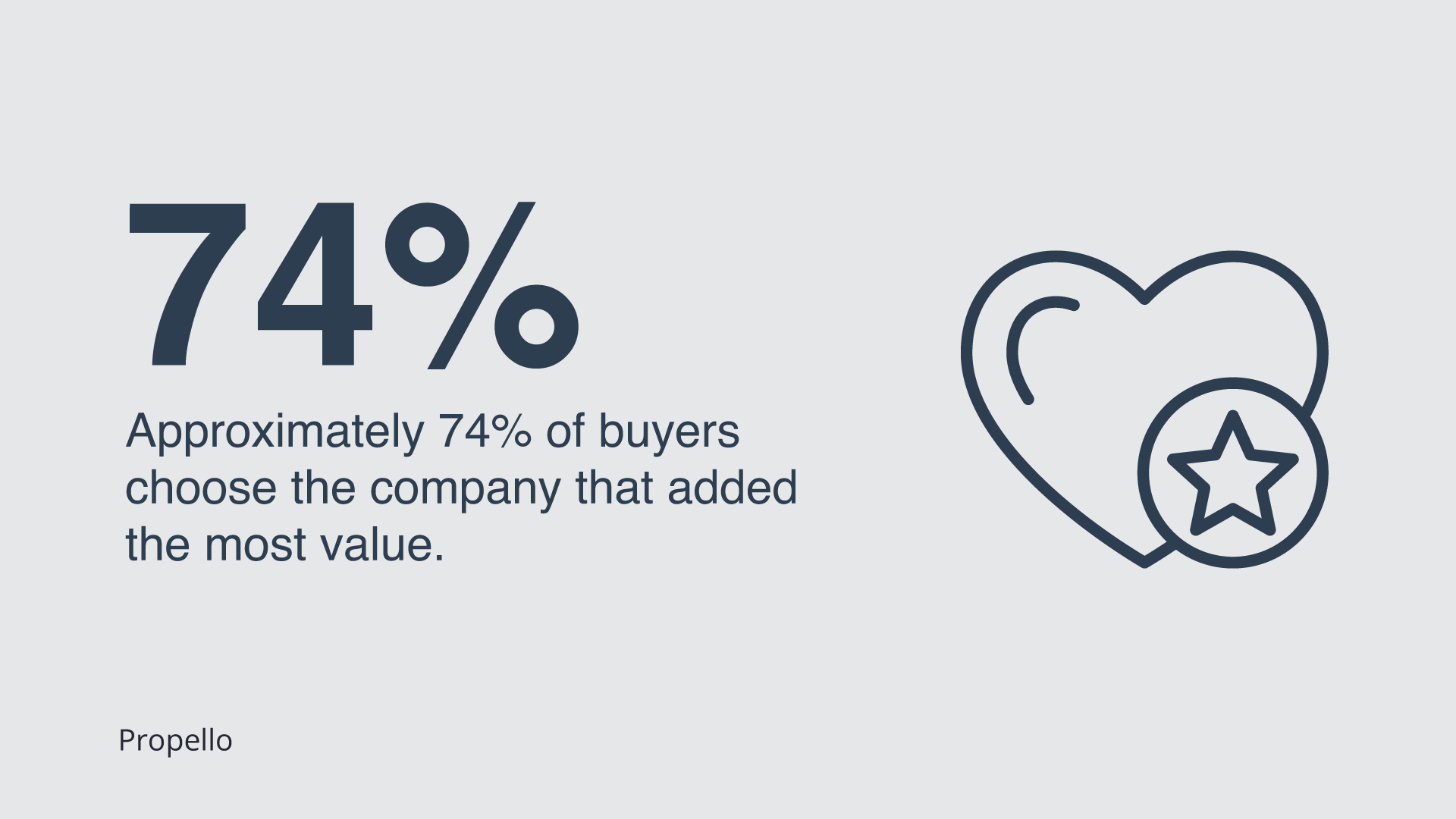
Over 90% of B2B sellers say they don’t use sales materials because they think they're irrelevant, outdated, and difficult to customize.
However, if you take the time to develop high-quality content, you'll increase your chances of winning over new clients.
You can also use sales collateral to educate prospective buyers about your offerings. Research shows that buyers are more likely to purchase from companies that provide them with educational resources.
For instance, you could include case studies, white papers, and eBooks in your sales kit. You should also make sure that all of your content is easily accessible online.
If you don't have an effective website, you won't be able to reach your target audience.
80% of consumers say the experience they receive from a business is just as important as their product or service.
Customers expect businesses to deliver exceptional experiences every time they interact with them. However, many organizations struggle to create these kinds of interactions.
To succeed in today’s digital world, you need to build a culture that focuses on delivering great customer experiences.
This starts with hiring people who care about creating memorable moments for customers. It also includes making sure that everyone in your organization has access to the information they need to exceed expectations.
Final Thoughts
In conclusion, choosing a sales enablement solution is a personal journey for your firm on the path to overall readiness. If you are considering a technology platform, find one that balances your specific needs for marketing and sales collaboration, sales onboarding and training, content management, and easy use of automation.
As the sales environment continues to evolve, so too must your sales strategy. About 75% of companies have a refocused sales approach, with nearly 70% entering a new market and almost 82% introducing a new product or service within the last 12 months.
With the constant evolution of selling functions, your team needs to have access to up-to-date training and the tools needed to sell. That is where sales enablement is important.
If you have more questions about creating a sales enablement strategy, feel free to ask us! We'd love to hear from you.
Start, empowering your Sales team.
Sources: Hubspot, webinarcare.com, financesonline.com, saasworthy.com, learn.g2, Datadwell
FAQ
What does Sales Enablement do?
Sales enablement solutions help companies prepare their sales team for success. They consist of technology platforms, processes, and people focused on helping salespeople collaborate effectively across departments and functions.
Companies adopt sales enablement because they want to improve sales performance, increase revenue, and reduce costs. Sales enablement helps salespeople achieve their goals faster and easier.
Salespeople who succeed at their jobs directly relate to a successful company. Empower your sales teams with a strong sales enablement strategy and watch them grow and improve based on data-driven reports.
